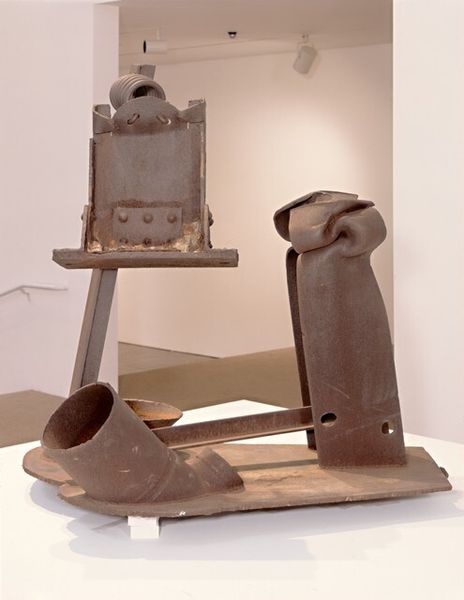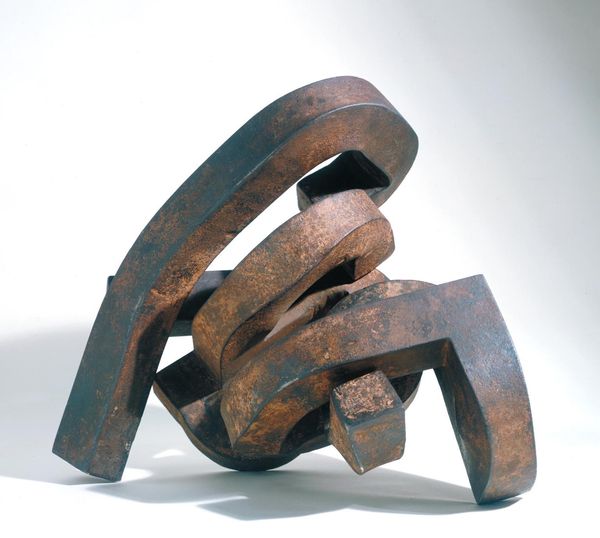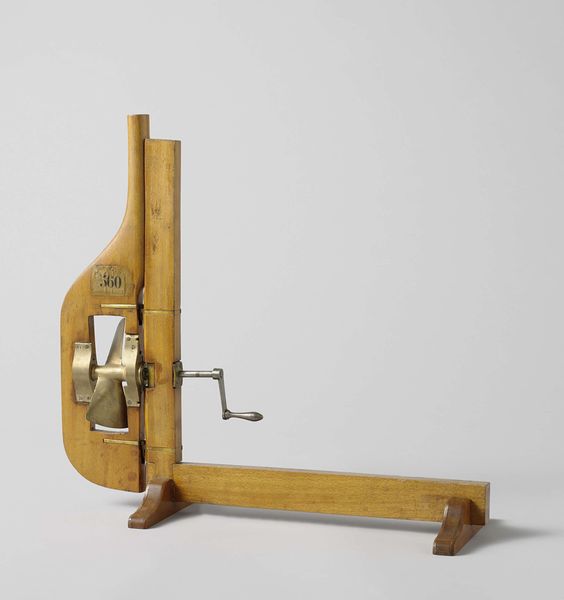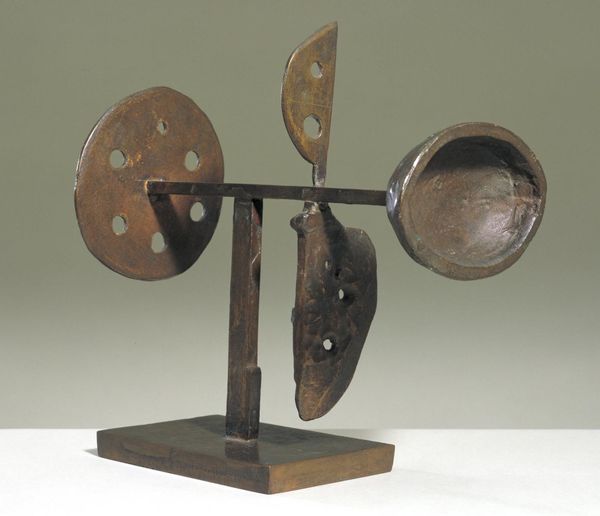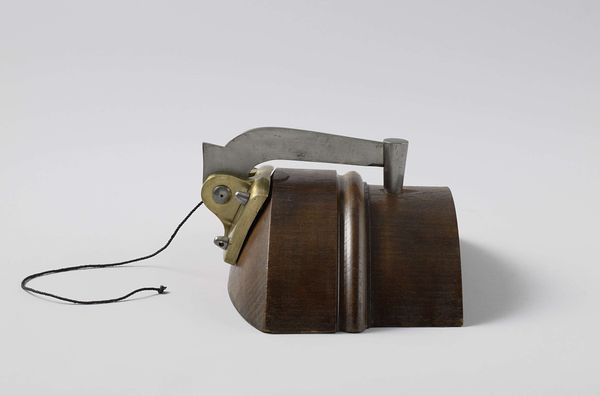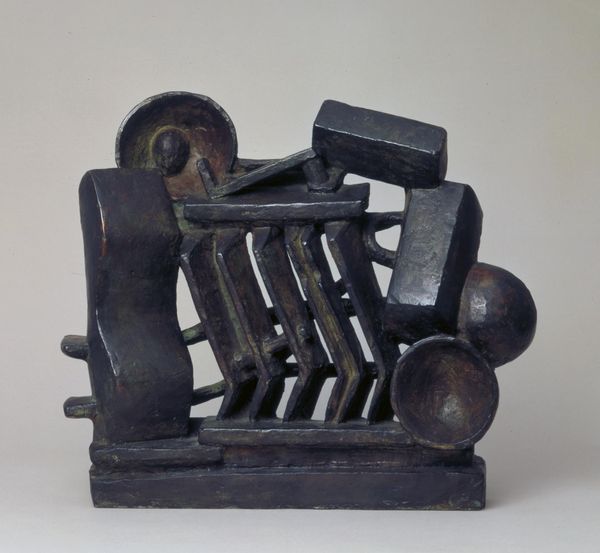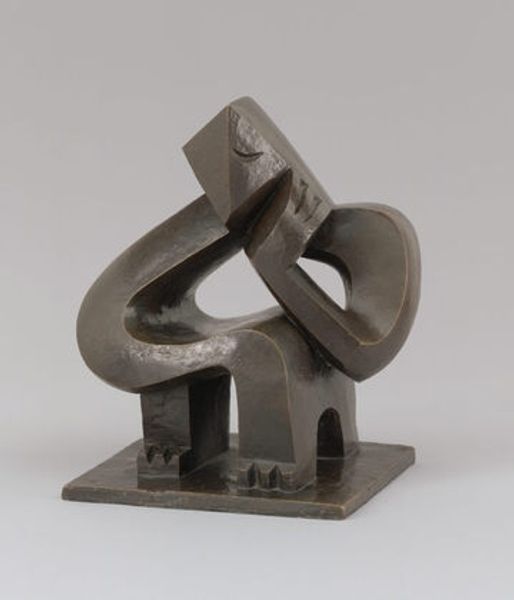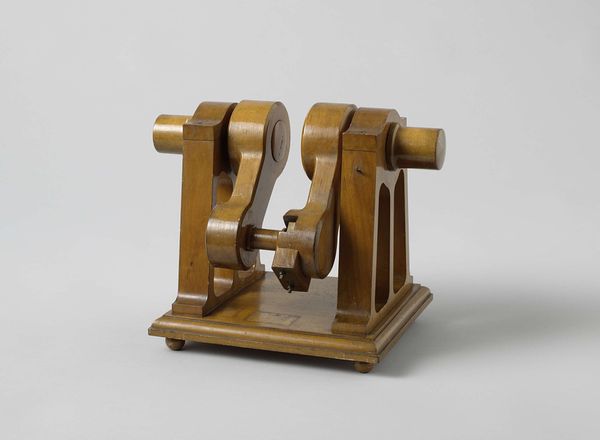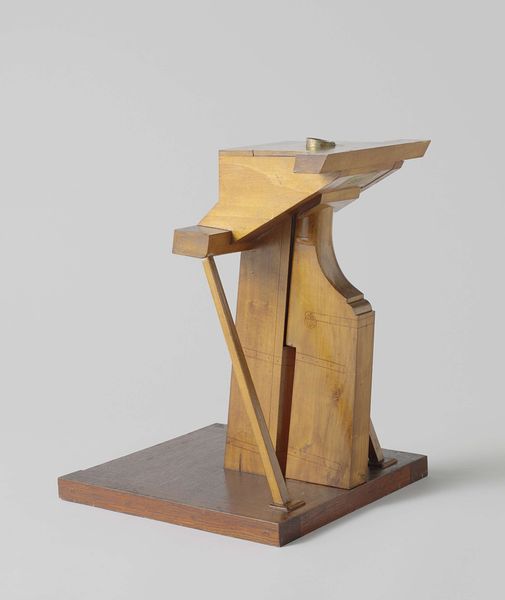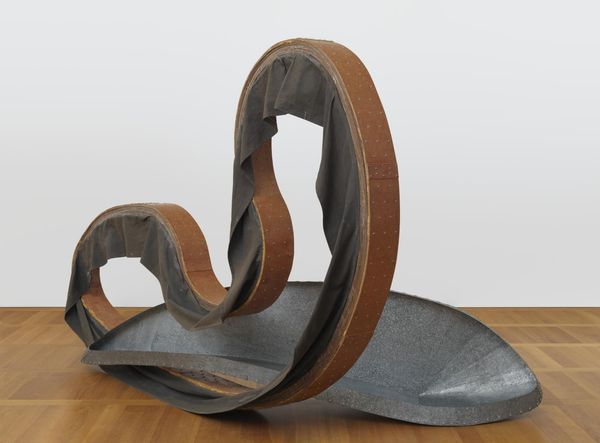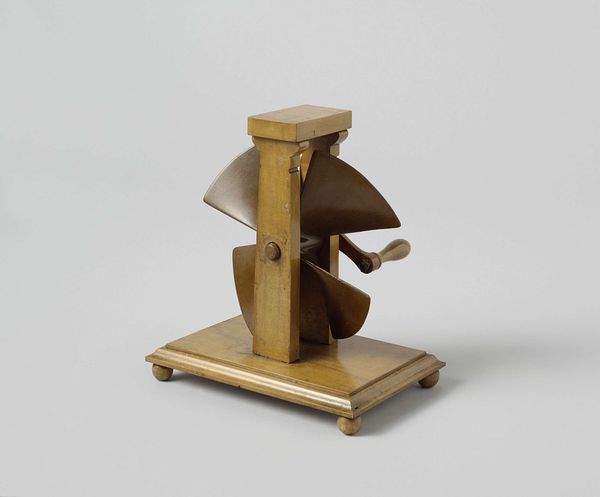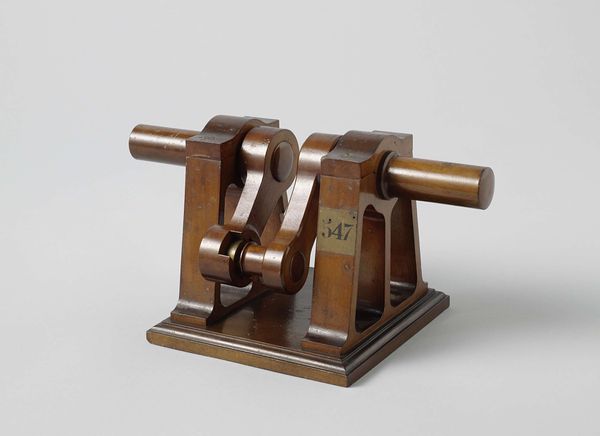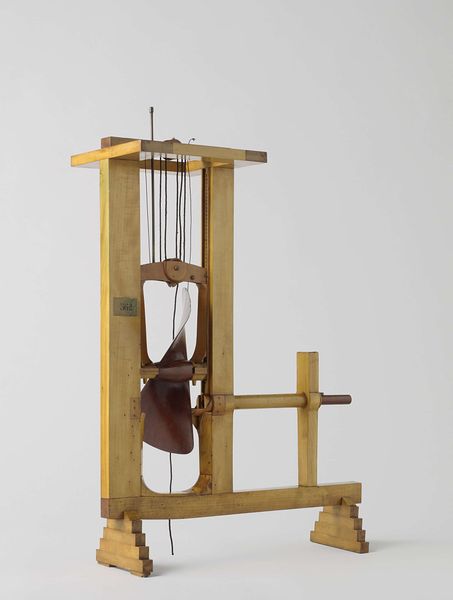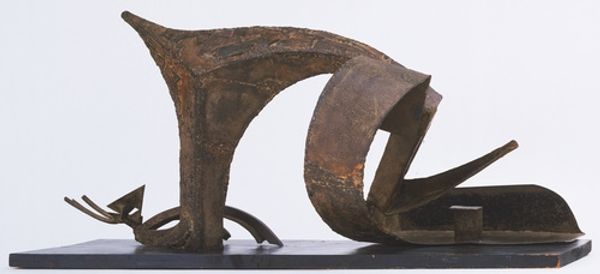
Dimensions: unconfirmed: 1830 x 2080 x 1345 mm
Copyright: © The estate of Anthony Caro/Barford Sculptures Ltd | CC-BY-NC-ND 4.0 DEED, Photo: Tate
Curator: Sir Anthony Caro's imposing steel sculpture, "The Soldier's Tale", resides here at the Tate. It's undated, but its presence is certainly felt. Editor: My first impression is one of precariousness. The heavy forms seem on the verge of collapse, a kind of brute vulnerability. Curator: Indeed. Caro often explored the tension between industrial materials and emotional expression. His use of raw steel and geometric shapes is meant to evoke our own precarious structures. Editor: Given the title, how might we interpret that through a lens of masculinity and warfare? Is it a critique of constructed strength, hinting at the psychological burdens soldiers carry? Curator: That’s a powerful reading. Caro was invested in the politics of imagery, the public role of art, especially in the post-war era. Editor: Reflecting on our brief discussion, I now see "The Soldier's Tale" as a potent symbol of both physical and emotional weight. Curator: Yes, the sculpture urges us to consider the socio-political complexities inherent in the creation and reception of art.
Comments
Join the conversation
Join millions of artists and users on Artera today and experience the ultimate creative platform.
tate 8 months ago
⋮
During the early 1980s Caro began using massive buoys, chain links and other scrap from marine dockyards. In The Soldier's Tale, he has cut and arranged sheets of steel to produce a framing device, and inserted a large cup-like form. The juxtaposition of flat plane and enclosed space creates a sense of opening, like a mouth singing. The title refers to a piece of music by Igor Stravinsky. Caro has suggested that just as musical notes are combined into a melody or sonata, so his individual components cohere in a sculptural whole. Gallery label, August 2004
